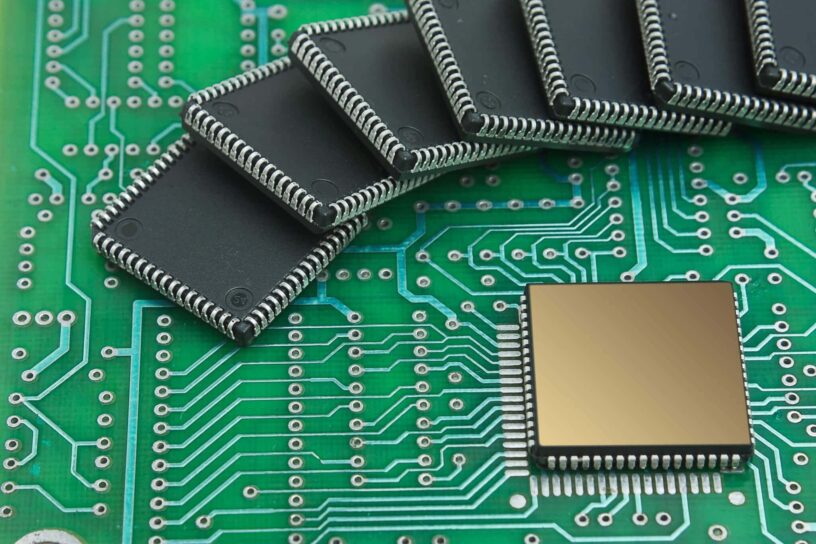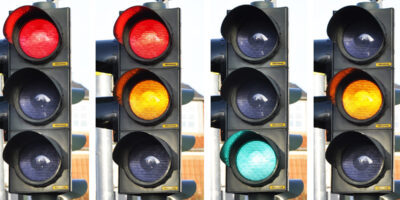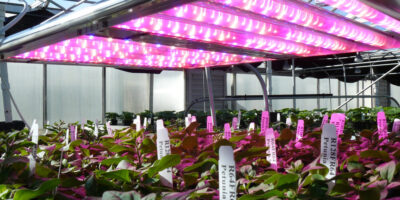Semiconductor Biosensors Market is evaluated to reach From USD 32.49 million to USD 196.3 million in 2033. The CAGR will be 9.8% during 2024 to 2033.
Definition
Semiconductor biosensors are analytical devices that integrate biological recognition elements with semiconductor technology to detect and measure biological substances. They are widely used for their precision and ability to be integrated into electronic systems.
Historical Development
The development of semiconductor biosensors began in the late 20th century with the advent of microfabrication techniques. Initial applications focused on glucose monitoring, leading to the creation of compact and efficient biosensors for various biomolecules.
Market Relevance
The semiconductor biosensors market is gaining traction due to the increasing demand for miniaturized, efficient, and reliable sensing devices across various sectors, including healthcare, environmental science, and industrial processes.
Working Principles of Semiconductor Biosensors
Basic Mechanisms
Semiconductor biosensors operate by converting a biological response into an electrical signal through a semiconductor transducer. This involves the interaction between the target analyte and a biological recognition element, resulting in a measurable electronic output.
Types of Semiconductor Biosensors
- Field-Effect Transistor (FET)-Based Biosensors: Use a field-effect transistor to detect changes in the electric field caused by the binding of the target molecule.
- Capacitive Biosensors: Measure changes in capacitance resulting from the interaction between the analyte and the sensor surface.
- Resistive Biosensors: Detect changes in resistance due to the binding of the analyte.
- Piezoelectric Biosensors: Utilize the piezoelectric effect to detect mechanical changes induced by the analyte binding.
Key Components
- Biological Recognition Element: Specific to the target analyte, such as enzymes, antibodies, or nucleic acids.
- Semiconductor Transducer: Converts the biological interaction into an electrical signal.
- Signal Processor: Analyzes and processes the electrical signal for output.
Objectives of Using Semiconductor Biosensors
Enhanced Sensitivity
Semiconductor biosensors provide high sensitivity, making them suitable for detecting low concentrations of analytes, which is critical in medical diagnostics and environmental monitoring.
Real-Time Analysis
These biosensors offer real-time data acquisition, essential for applications requiring immediate results, such as point-of-care diagnostics and industrial process control.
Integration with Digital Systems
The compatibility of semiconductor biosensors with digital systems facilitates seamless data processing, storage, and analysis, enabling advanced functionalities in smart devices and connected applications.
Demand and Key Growth Opportunities
Medical Diagnostics
Semiconductor biosensors are extensively used in medical diagnostics for the detection of biomarkers, pathogens, and metabolites. They enable rapid and accurate testing, contributing to improved patient outcomes and personalized medicine.
Environmental Monitoring
In environmental science, semiconductor biosensors are employed to detect pollutants, toxins, and other environmental hazards. Their ability to provide real-time monitoring enhances their utility in ensuring environmental safety and compliance with regulations.
Industrial Applications
Industries utilize semiconductor biosensors for process control, quality assurance, and safety monitoring. They are integral in sectors such as food and beverage, pharmaceuticals, and chemical manufacturing.
Market Development and Trends
Technological Advancements
Recent advancements include the development of nanoscale semiconductor biosensors, improved fabrication techniques, and enhanced signal processing capabilities, leading to more efficient and versatile sensors.
Regulatory Impacts
Regulatory frameworks, particularly in healthcare and environmental sectors, influence the market by driving the need for accurate, reliable, and compliant biosensing solutions.
Market Forecasts
The semiconductor biosensors market is expected to grow robustly, driven by technological innovations, expanding applications, and increasing demand for portable and integrated biosensing devices.
Challenges and Limitations
Technical Constraints
Challenges include issues with stability, interference, and the complexity of integrating biological elements with semiconductor materials.
Market Barriers
High development costs, regulatory hurdles, and the need for specialized knowledge can pose barriers to market entry and adoption.
Mitigation Strategies
Developing robust and scalable fabrication processes, enhancing sensor stability, and simplifying user interfaces can help overcome these challenges and promote wider adoption.
Future Implications
The future of semiconductor biosensors looks promising with continued advancements in technology, integration with smart systems, and emerging applications in various sectors. These innovations are expected to enhance their utility and drive market growth, making them a critical component of future analytical and monitoring systems.
Receive the FREE Sample Report of Semiconductor Biosensors Market Research Insights @ https://stringentdatalytics.com/sample-request/semiconductor-biosensors-market/9498/
Market Segmentations:
Global Semiconductor Biosensors Market: By Company
• Denso
• Roswell
• Onechip
Global Semiconductor Biosensors Market: By Type
• Light Addressable Potentiometric Sensors (LAPS)
• Quantum Dots
Global Semiconductor Biosensors Market: By Application
• Medical
• Food
• Environmental Monitoring
• Others
Regional Analysis of Global Semiconductor Biosensors Market
All the regional segmentation has been studied based on recent and future trends, and the market is forecasted throughout the prediction period. The countries covered in the regional analysis of the Global Semiconductor Biosensors market report are U.S., Canada, and Mexico in North America, Germany, France, U.K., Russia, Italy, Spain, Turkey, Netherlands, Switzerland, Belgium, and Rest of Europe in Europe, Singapore, Malaysia, Australia, Thailand, Indonesia, Philippines, China, Japan, India, South Korea, Rest of Asia-Pacific (APAC) in the Asia-Pacific (APAC), Saudi Arabia, U.A.E, South Africa, Egypt, Israel, Rest of Middle East and Africa (MEA) as a part of Middle East and Africa (MEA), and Argentina, Brazil, and Rest of South America as part of South America.
Click to Purchase Semiconductor Biosensors Market Research Report @ https://stringentdatalytics.com/purchase/semiconductor-biosensors-market/9498/
Future Prospects and Innovations
Emerging Technologies
Innovations in materials science, nanotechnology, and microfabrication are expected to drive the development of next-generation semiconductor biosensors with enhanced performance and new functionalities.
Potential Market Growth
Integration with wearable devices, smart systems, and IoT (Internet of Things) is anticipated to expand the market reach of semiconductor biosensors, offering new opportunities for growth and application.
R&D Directions
Research is focused on improving sensor selectivity, sensitivity, and integration capabilities, as well as exploring novel applications in emerging fields such as digital health and environmental monitoring.
Comparative Analysis with Other Technologies
Semiconductor vs. Optical Biosensors
Compared to optical biosensors, semiconductor biosensors offer advantages in terms of integration with electronic systems, cost-effectiveness, and the ability to provide compact, portable solutions.
Cost-Benefit Analysis
Semiconductor biosensors often present a favorable cost-benefit ratio, particularly in applications requiring miniaturization and integration with electronic systems, making them a preferred choice in many sectors.
Performance Metrics
Key performance metrics for evaluating semiconductor biosensors include sensitivity, selectivity, response time, and compatibility with electronic systems, which often surpass those of traditional biosensors.
User Guides and Best Practices
Installation and Calibration
Proper installation and calibration are crucial for ensuring accurate and reliable performance. Follow manufacturer guidelines and use appropriate calibration standards.
Maintenance Tips
Regular maintenance, including cleaning, recalibration, and inspection, helps maintain the performance and longevity of semiconductor biosensors.
Troubleshooting
Common issues such as signal drift or reduced sensitivity can often be addressed by checking connections, recalibrating, and ensuring proper storage and handling of the biosensors.
Semiconductor Biosensors: Frequently Asked Questions (FAQs)
- What are semiconductor biosensors?
- How do semiconductor biosensors work?
- What are the main types of semiconductor biosensors?
- What are the applications of semiconductor biosensors?
- Why are semiconductor biosensors important in medical diagnostics?
- What are the key components of a semiconductor biosensor?
- How are semiconductor biosensors different from traditional biosensors?
- What are the advantages of using semiconductor biosensors?
- What are the limitations of semiconductor biosensors?
- How are semiconductor biosensors integrated with digital systems?
- What factors affect the sensitivity of semiconductor biosensors?
- What are common challenges in the development of semiconductor biosensors?
- How are semiconductor biosensors used in environmental monitoring?
- What is the role of semiconductor biosensors in industrial applications?
- How do Field-Effect Transistor (FET)-Based biosensors work?
- What are capacitive biosensors and how do they function?
- What are resistive biosensors and how do they detect changes?
- How do piezoelectric biosensors operate?
- What is the future outlook for the semiconductor biosensors market?
- How do semiconductor biosensors contribute to real-time analysis?
- What are the recent technological advancements in semiconductor biosensors?
- How are semiconductor biosensors calibrated and maintained?
- What are some examples of biological recognition elements used in semiconductor biosensors?
- How do semiconductor biosensors enhance process control in industries?
- What are the cost implications of using semiconductor biosensors?
- How do semiconductor biosensors support personalized medicine?
About Stringent Datalytics
Stringent Datalytics offers both custom and syndicated market research reports. Custom market research reports are tailored to a specific client’s needs and requirements. These reports provide unique insights into a particular industry or market segment and can help businesses make informed decisions about their strategies and operations.
Syndicated market research reports, on the other hand, are pre-existing reports that are available for purchase by multiple clients. These reports are often produced on a regular basis, such as annually or quarterly, and cover a broad range of industries and market segments. Syndicated reports provide clients with insights into industry trends, market sizes, and competitive landscapes. By offering both custom and syndicated reports, Stringent Datalytics can provide clients with a range of market research solutions that can be customized to their specific needs.
Reach US
Stringent Datalytics
+1 346 666 6655
Social Channels:
Linkedin | Facebook | Twitter | YouTube




Leave a Reply